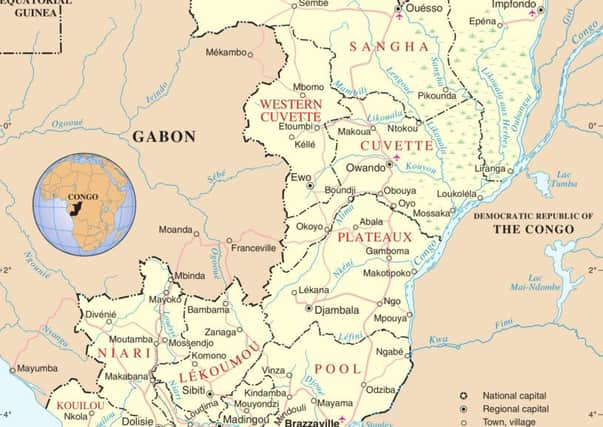Scots student helps find massive African peat bog


Shetlander Greta Dargie was working on her postgraduate degree in a remote area of Congo-Brazzaville when the vast bog was found.
Academics from the University of Leeds, the Wildlife Conservation Society-Congo and Congo-Brazzaville’s Marien Ngouabi University spent weeks trekking through waterlogged jungle and dodging dangerous animals to explore the site, which covers an area the size of England.
Advertisement
Hide AdAdvertisement
Hide AdCongo-Brazzaville is sparsely populated, with nearly three quarters of inhabitants living in the southwest of the country. Extensive areas of tropical jungle in the north are virtually uninhabited and little explored.
The expedition was launched at the beginning of April after experts spotted signs suggesting its existence in satellite photographs.
“It’s remarkable that there are parts of the planet that are still uncharted territory,” said lead researcher Dr Simon Lewis, from the University of Leeds.
“Few people venture into these swamps as they are quite difficult places to move around in and work in.”
Though they cover less than three per cent of the planet’s surface, peatlands are estimated to contain twice as much carbon as forests.
Scotland’s Flow Country, in the far north, is made up of nearly 1,600 square miles of internationally important blanket bog.
Ms Dargie, who graduated with a masters in geography from Edinburgh University in 2009, studied peatlands in her home nation before heading for the jungles central Africa.
After nearly three weeks surviving in some of the most inhospitable territory on the planet, she was described by Dr Lewis as “officially the world’s hardest PhD student” .
Advertisement
Hide AdAdvertisement
Hide AdHe tweeted: “Greta Dargie, doing a peaty PhD with me, is officially the world’s hardest PhD student. 18 days in the swamp with no respite.”
Stretching over 40,000 to 80,000 square miles, the site is one of the world’s largest wetlands and is estimated to contain billions of tonnes of peat.
The peat layer is around seven metres deep, locking in huge stores of carbon that would damage the environment if released into the atmosphere.
Now the scientists say analysis of the material, which has accumulated over millennia, could unlock the secrets of natural and man-made environmental changes.
“Peatlands, generally, have been a big carbon sink over the past 10,000 years. They have been taking carbon out of the atmosphere and storing it as peat for the long term,” Dr Lewis said.
“And what we’ve found in central Africa is another one of those areas, so it adds a little piece to that jigsaw puzzle of where all the carbon goes in the atmosphere, where the sources are and where the sinks are, particularly in the pre-industrial era.
“So we can reduce our uncertainty around the global carbon cycle before humans started changing it.”
The scientists have brought samples of the peat back to the UK to establish its age and the type of vegetation it holds.
Advertisement
Hide AdAdvertisement
Hide AdPeat is made from partially decayed plants. It forms in wetland conditions, where flooding obstructs oxygen flow and slows the rotting process.
“Decomposition is generally fast in the tropics because of the high temperatures. But in areas that are waterlogged almost the whole year round, and flooded by water that contains very low levels of nutrients, then this can inhibit decomposition enough to allow peat formation,” Dr Lewis said.
“It requires slow conditions for the decomposition, so you naturally find most peatlands are in the cold zones. It’s rare to find them in the wet and warm tropics, so that makes this an unusual discovery.”
He said it was possible further previously unknown bogs might be discovered, but nothing on the scale of this latest find.
“In south-east Asia peat forests are well known, and a few years ago some areas of peat under tropical forest was discovered in Peru, in the Amazon,” Dr Lewis said.
“I suspect we may find new areas in the Amazon, and I suspect in Africa too, but nowhere as extensive as the swamps of the central Congo basin because this area is one of the world’s largest wetlands.”